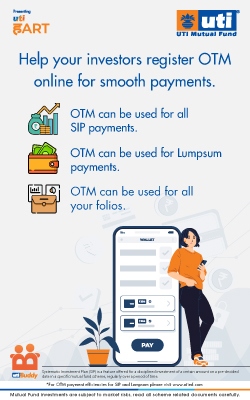Here’s a statistic. We get 8 out of 10 leads through our website www.FutureAdvisor.co.in. Before I get in to how we have achieved this, let me share a few observations on the websites of some financial advisors in India:
These websites are not helping advisors get enough leads.
Ask yourself; is your website in the same category?
What’s the reason behind having a website for your practice? If you think the reason your website exists is because other financial advisors have it, then don’t read any further. If that’s not the reason, I believe, you probably want your website to help you increase your business but somehow it hasn’t.
The purpose of this article is to list down those critical factors that can help you generate leads. Go back and identify if your website lacks any of these desired characteristics and start working on it right away.
1. It was never meant for lead generation:
Most websites of financial advisors are created by a handful of vendors. Most websites appear to be corporate brochures rather than active lead generating machines. There is a fundamental flaw in design. In other cases, it has been created by creative agencies who do not really understand the science of online marketing.
I hear advisors telling me “but we do have a ‘contact us’ section.” But ask yourself, is that bringing you leads?
2. No call to action buttons:
Ask yourself this question. When a
visitor comes to your site, what is the goal you have? Is your website nudging
him to do that? E.g. if your primary goal is to “contact me” is that the main
“call to action” on your home page? Or are there 10 other things he can
possibly do? If yes, these 10 other buttons are competing with your primary
goals of “contact me”.
Let’s look at an example of a site called www.mint.com. Their primary call to action is to make users to sign up.
Try going to any page on www.mint.com. You will see the same ‘sign up’ button everywhere. You never know when a user will decide to contact you and you should enable him or her to contact you quickly. In your case it could be something like “Contact us for a free consultation” or “Set up an appointment now”.
3. No or inactive blog:
A blog is a good way to keep updating your prospects about who you are and what you do without being too pushy. If you have a list of prospects with their e-mail IDs, it is a good idea to put them in your regular mailing list and keep sending them links to your latest blog.
They won’t convert right away, but if they keep reading you, someday they’ll contact you.
4. No team profile:
I fail to understand why should a website not have financial advisor’s profile? In a service industry like ours, it is even more important that the website visitors know who they are going deal with. They expect a team/people section on your website and want to know the people whom they will trust their money with. Without that, I’m afraid the lead conversion will be very low.
5. No clear service offering:
I see a lot of websites just writing basic stuff about certain products like life insurance/mutual funds etc. Your visitors need more precise information. What is your offering? Can you productize the service, and price it?
So instead of writing generic stuff about financial products you are rather creating content that the client can relate to. For example, you should talk about services like complete portfolio review, tax planning and filing, comprehensive insurance planning, comprehensive financial planning, financial planning for single women etc.
6. Pricing is not clear:
If your fee is disclosed upfront and leads still contact you, you can be rest assured that they are dead serious about your offering. What it also does is that it shows them that you are transparent about your revenues.
In the above case, it makes sense to price those offerings e.g. Tax planning and filing could be priced attractively at Rs.1, 999 or a comprehensive financial plan could be priced at Rs. 9,999 etc. You may have your own pricing which could be a certain percent of the assets under advice. Whatever be it, it should be clear and upfront.
7. No testimonials:
A financial advisor’s website without client testimonials and real faces will not generate enough emotions. You need to have a great testimonials page with real photos of the client’s family. Create a couple of client stories rather than just a few lines of testimonials. That will create a more engaging content and visitors will be able to relate to it.
8. No use of trust marks:
Remember when you are about to transact on an e-commerce site or make a payment towards your utility bill online? It will always have trust marks like Verisign Secure, 256-bit encryption etc. etc. The idea is to build trust in the mind of the website visitors that is it safe to transact here.
In our case, we can use things like CFP certification image or IRDA/SEBI/AMFI license registration number on the footer of the home page. It just builds some sort of trust.
9. No contact details:
This is such a basic thing but if it is prominently placed on all pages it just makes the client feel that this company is just a call away and will nudge them to call you.
10. Lack of forms on every page:
If your first goal is to make the client “Contact for a free consultation” or “Set up an appointment” then put up a small form on all pages that asks them to do exactly that. Somewhere on the left of right bar or at the bottom. Do not make the form too lengthy. Just name, phone, email address and, if required, a message field will suffice. If it’s there, it will be on the back of the visitor’s mind to try and contact you.
11. It is just not active:
Most of the time, the content is not updated for years. That’s a stale site. Look at your site and see if that is the case. Here are things you can do:
- You organized a workshop? Put up photos.
- You have created an e-book? Why not let the users download it for free? But only before they part with their information.
- Embed your twitter or facebook feed if you are active there.
12. Not optimized for search engine:
Making your website rank in search engines is a vast topic and beyond the scope of this article. But what you can do is ask your website developer whether the basic Search Engine Optimization (SEO) is functional or not. The following things should be there: a sitemap, proper URL structure, page title, meta description.
Conclusion:
Remember, none of these points in isolation will bring you leads. It is when most of these points are working in tandem that they create an overall impact and turn visitors into leads.
The views expressed in this article are solely of the author and do not necessarily reflect the views of Cafemutual.




